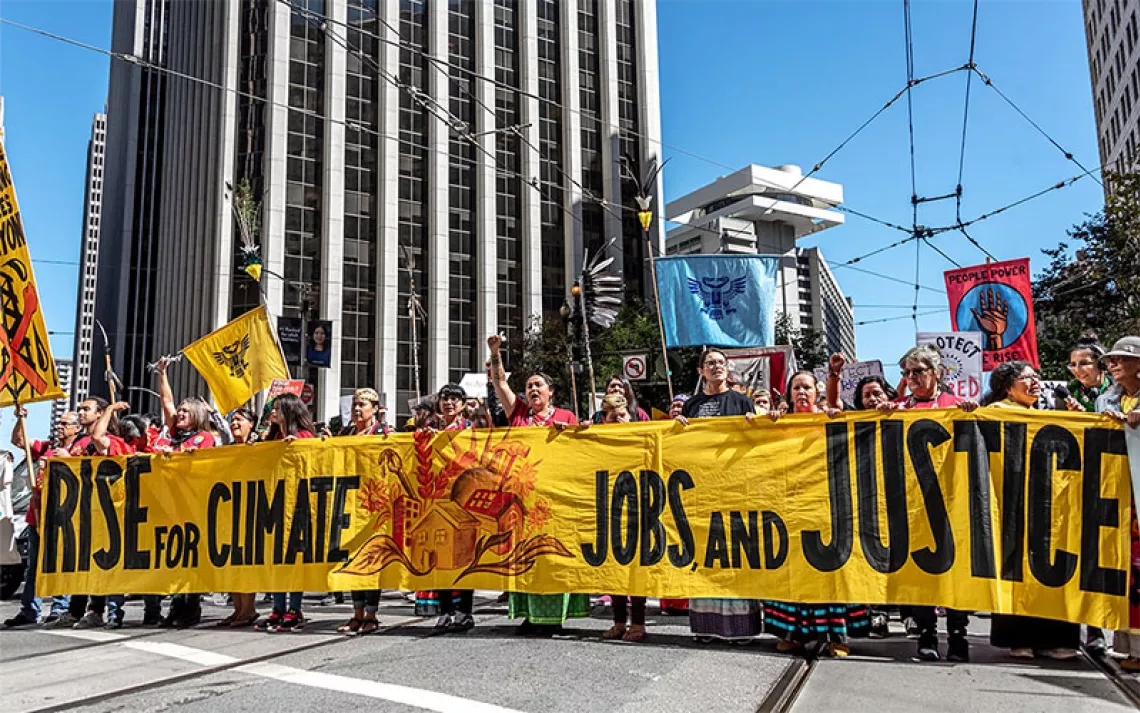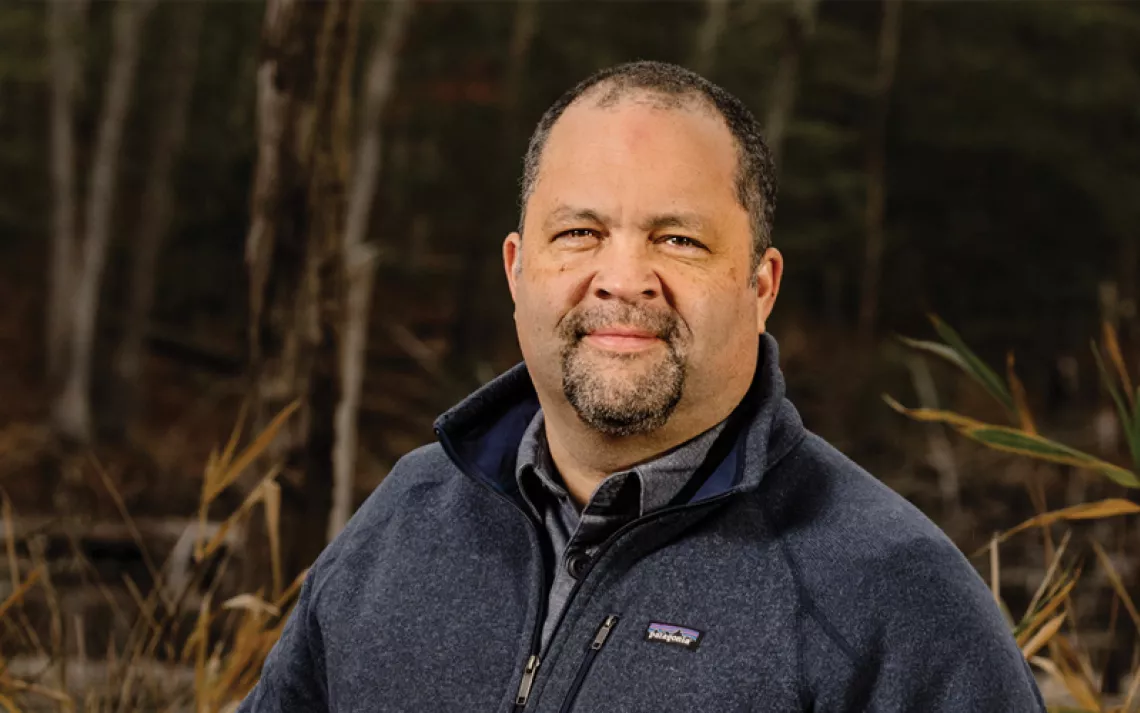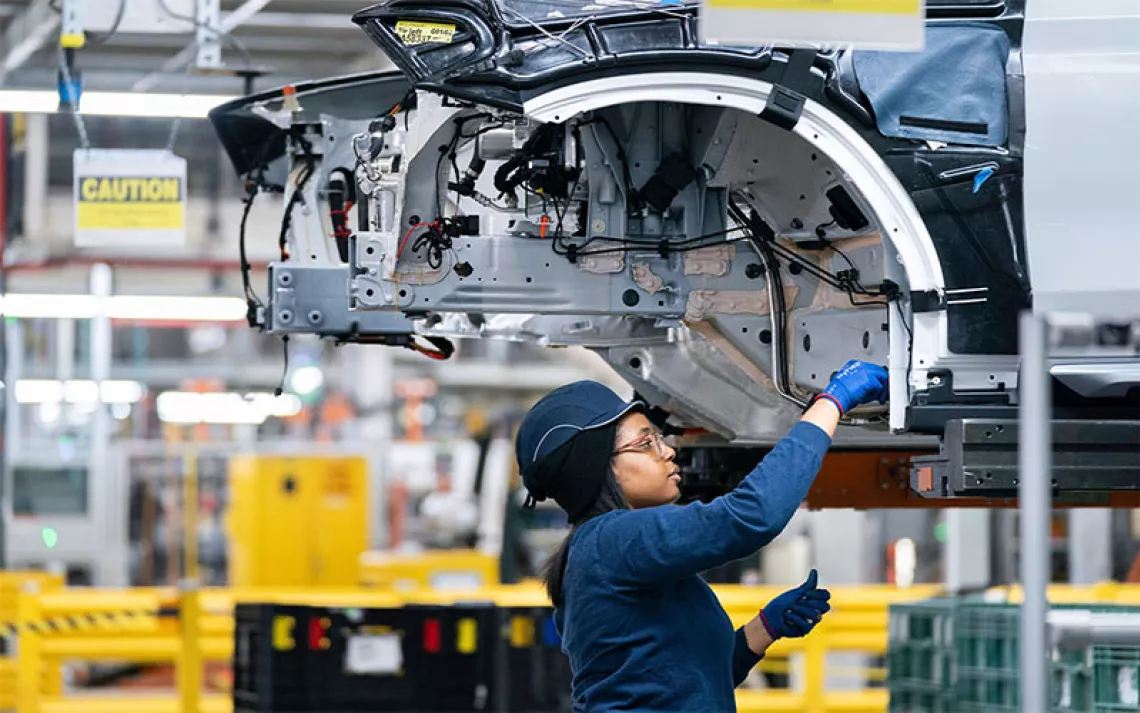Electrifying Everything Will Require a Much Larger Workforce
Electricians are essential to a renewable energy future

JED PULSIFER NEVER EXPECTED TO be on the front lines of the energy transition. In 2018, ready to switch careers after nearly a decade in retail, he enrolled in trade school and got his HVAC certification so he could begin working on heating, ventilation, and air-conditioning systems. New credentials in hand, he landed a job at ReVision Energy, an employee-owned renewable energy company in New England, where he also enrolled in an electrician apprenticeship program. After that, Pulsifer was hooked.
“It’s extremely gratifying being able to build a project, install something, turn it on, and know it’s going to have a positive impact on someone’s life and their home,” said Pulsifer, who now manages ReVision’s team of nearly 40 electricians in South Portland, Maine. “Getting the opportunity to effectively make someone’s home completely independent from fossil fuels is really satisfying.”
In order to meet the decarbonization goals set by the Biden–Harris administration and many states, the country will need a lot more skilled tradespeople like Pulsifer. The scale and scope of what’s needed to electrify everything mean people who work in the skilled trades—from electricians to HVAC technicians—are in higher demand than ever. But there’s one problem: There doesn’t seem to be enough of them.
“I’m excited because it means my job matters more,” said Anna Veronica Bourke, a solar installation instructor at Grid Alternatives in Sacramento, California. “At the same time, I’m also like, do we have the time? Are we going to be able to hit all the deadlines that are required to electrify the world?”
“Getting the opportunity to effectively make someone’s home completely independent from fossil fuels is really satisfying.”
There were more than 760,000 electricians working across the United States in 2022, according to the Bureau of Labor Statistics. The number of electrician jobs is expected to grow by 6 percent between 2022 and 2032—double the average growth rate for all occupations. Hiring will need to ramp up to keep pace. Electricians report being fully booked, their schedules filling up months in advance, and even turning away potential clients. The lack of workers can lead to delays in service that leave greenhouse-gas-emitting appliances in use longer than they otherwise would be.
The federal government projects 73,500 openings for electrician jobs annually, many of them to replace workers who are retiring or leaving the industry. Alexandria Herr, a senior research associate at Rewiring America who studies the electrification workforce, said the best way to fill that gap is to increase the number of apprenticeship programs. Labor groups and trade associations like the International Brotherhood of Electrical Workers, Independent Electrical Contractors, and Associated Builders and Contractors have multiyear programs. But Herr said these are highly competitive and that the country needs more apprenticeships in high schools and community colleges so that these opportunities are more widely publicized.
“There are people who want to enter registered apprenticeship programs,” she said. “It’s about making them more available, making sure all these jobs have high wages and family-sustaining benefits, and also making sure people know how to enter these programs.”
Ramping up electrification, Herr added, “is not necessarily just a demand problem.” In addition to their roles in construction and maintenance, contractors are messengers. “If a contractor comes to your house and says you should reinstall the gas heater you already have, and they don’t recommend a heat pump, you’re more likely to just reinstall the thing that you already have, which we really can’t afford to be doing anymore,” she said.
One study commissioned by HVAC manufacturer Midea found that after learning more about heat pumps, 87 percent of contractors said they would be more likely to install one in their own home. Rewiring America works with contractors to spread the word about the benefits of electrification among their peers, but Herr said much more outreach is needed.
The climate impact of electrical work is front of mind at some training centers. “Essentially every lecture, there’s at least several slides that encompass climate change,” said Bourke, who studied environmental science at the University of San Francisco before pivoting to solar installation. Trainees in Bourke’s program at Grid Alternatives participate in activities from day one that expand their knowledge of climate change and how it has impacted their lives, she said.
Some electricians are drawn to the job specifically because of the role it plays in cutting emissions. Nathanael Johnson is one of them. He found his calling for a second career as an electrician during the pandemic, while working as a journalist for the environmental news site Grist.
“I’d been writing about this concept of electrifying everything, and this idea that I could actually put my hands to work was really compelling after just talking and talking and talking about it,” said Johnson, who lives in Berkeley, California.
Johnson left journalism in January 2022 to focus on his electrical apprenticeship, and he hopes to be certified by the end of this year. “There’s an unimaginably huge pile of work to get done,” he said. “It is definitely a drag on the energy transition that there aren’t enough electricians right now—the need for them is ballooning.”
 The Magazine of The Sierra Club
The Magazine of The Sierra Club



